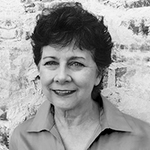Question
What should I do if I suspect a poisoning?
Answer
If you suspect a poisoning, don't wait to call for help. Don't wait to see if the child gets sick. If you suspect a poisoning, the first thing that it's recommended is that you call the Poison Control Center. When you call 1-800-222-1222, you will be connected with your local Poison Control Center. It doesn't matter what part of the country you're in, it will connect you to the local Poison Control Center. This number should be posted by your phones and be programmed into your cell phone. Put it on the wall with your other emergency information and call this number as soon as you suspect poisoning. The Poison Control Center is staffed 24 hours a day, 365 days a year, by people who are qualified and knowledgeable about a variety of hazardous substances. They will give you the best advice.
This is the number that I would call no matter what, even if you're not sure if there's a poisoning. Don't feel silly about it. One time I looked at my child and noticed something in his hand. It turns out it was the little seed pods off of what we call monkey grass, which is grown a lot in the south. I called Poison Control and they told me it was okay and that it was not toxic.
Another time, I was working with a Head Start program and we had a landscaper who came in to help renovate the playgrounds. There was an old tennis court that we turned into a tricycle path and they planted some large bushes in planters on that concrete area. We wanted some shade, so we asked them to plant something that could live in containers. They planted something called weeping yaupon. They told us they were wonderful because they had little berries and the birds loved them.
The next spring when I was out visiting, one of the Head Start teachers came to me and said, "Ms. Hendricks, this a nice playground and the kids love it, but you know those bushes over there, I'm kinda worried because they've got all these little red berries on them and the birds don't come anywhere near it." I always admire teachers because they notice the little things and they're concerned and they want to do the best. I thought, if a bird won't eat the berry, I'm concerned about the berries. The first thing I did was I went to a local nursery where some friends worked. I showed him a picture and some berries and said, "What is this?" He looked it up and found that it was weeping yaupon. He looked up the technical name of it and it was something about vomitus. That was the first indication that this was not good. I called the Poison Control Center and told them about it and at first, she said she didn't think it was toxic, but she looked again just to make sure. She found that it was considered toxic at 15 berries, but they treated poisoning if a child only ate five berries. Since we found that the berries were toxic, the people had to come and take out those bushes and put new ones in that did not have berries.
If you suspect a poisoning, have the following information available:
- Child’s condition (symptoms)
- Name of the product or ingredients
- How much product was taken and how exposed (ingested, breathed, absorbed)
- Time poisoning happened
- Child's age and weight
- Your name, address, and phone number
When you suspect poisoning and call the Poison Control Center, it's very important that you have all the information. You need to be able to tell them about the child, including his age, weight, how much of the substance he ate and how he's behaving. For example, if he's lethargic, coughing, or dancing around and seems to be fine. You should know the name of the product or the ingredients. Whatever product was ingested, take it to the phone with you. Look at the back of the label so you can tell them exactly what the product is, who the manufacturer is, and read the ingredients to them if you need to. They need to know how much of the product was taken and how the child was exposed. Was it ingested, breathed in, or was it on the skin and was absorbed? What time did it happen? They also want to know your name, the address where you are with the child, and a phone number where you can immediately be reached, especially if you happen to be disconnected.
This Ask the Expert is an edited excerpt from the course, Avoiding Exposure to Hazardous Materials in ECE Settings, in partnership with Region 9 Head Start Association, by Charlotte Hendricks, PhD.
